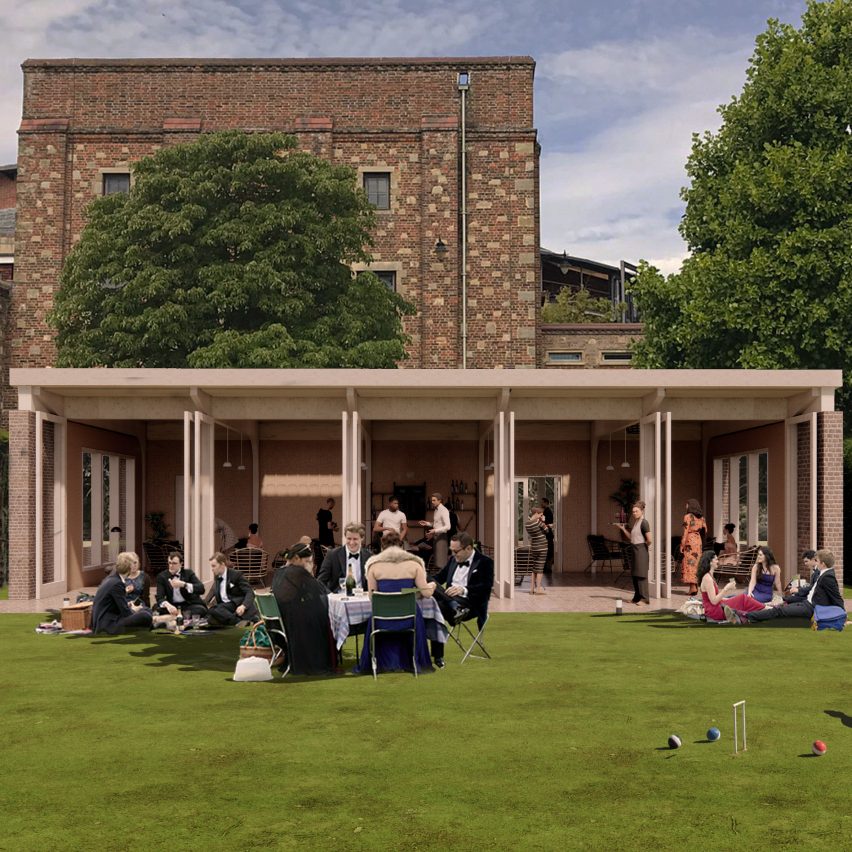Recyclable croquet pavilion to be made from champagne corks and oyster shells

BakerBrown Studio has designed a garden pavilion for the Glyndebourne opera house in England that will use the venue's discarded champagne corks and seafood shells as building materials.
The single-storey Glyndebourne Croquet Pavilion will overlook the South Downs from a small plot on a croquet lawn between existing yew hedges in the house's grounds.
Local office BakerBrown Studio's design employs the principles of a circular economy, relying on the use of waste materials to help minimise the building's carbon footprint.
Pavilion is "material store for the future"
Alongside the use of discarded champagne corks, wine stoppers, and oyster and lobster shells, the studio will also salvage diseased ash trees and use chalk excavated nearby to create the pavilion. Each material will be incorporated in a way that allows for deconstruction, meaning they will be bolted in place rather than glued to ensure their recyclability and reuse.
"What we're very interested in is reusing stuff that's already been produced, because then, in effect, there's a very negligible carbon footprint," explained the studio's founder, Duncan Baker-Brown.
Above: the pavilion will feature cork cladding inside. Top image: salvaged ash tree and local brick will be used outside
"Another big ambition for the pavilion is that it's a material store for the future, so it can be disassembled," he told Dezeen.
"You have to scratch the head a bit to make sure you're never sticking th...
| -------------------------------- |
| Smart ring helps people with sickle cell disease monitor blood oxygen levels |
|
|
Villa M by Pierattelli Architetture Modernizes 1950s Florence Estate
31-10-2024 07:22 - (
Architecture )
Kent Avenue Penthouse Merges Industrial and Minimalist Styles
31-10-2024 07:22 - (
Architecture )






